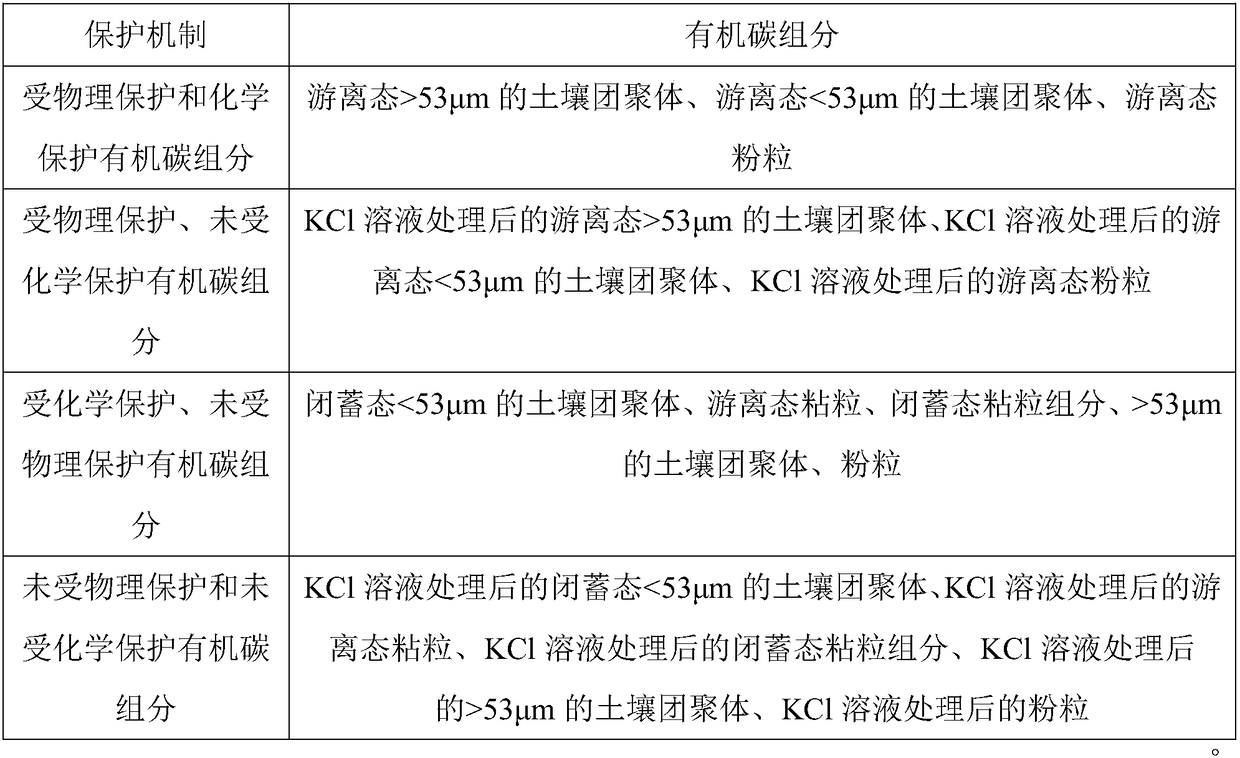Method for grouping organic carbons in soil by combing physics and chemistry
A grouping method and combined technology, applied in the direction of soil material testing, material inspection products, etc., can solve problems such as chemical structure damage, and achieve the effect of improving the overall understanding
- Summary
- Abstract
- Description
- Claims
- Application Information
AI Technical Summary
Problems solved by technology
Method used
Image
Examples
specific Embodiment approach 1
[0012] Specific implementation mode 1. Combination figure 1 Illustrate a kind of physical-chemical combination soil organic carbon grouping method of this embodiment, it comprises the following steps:
[0013] Step 1. Immerse a soil sieve with a pore size of 53 μm in distilled water at room temperature, weigh 100 g of an air-dried soil sample passed through an 8 mm sieve, place the soil sample on the soil sieve in distilled water, soak the soil sample in distilled water for 10 minutes, and then Swing up and down 50 times within 2 minutes, with a swing range of 3 cm. The soil components remaining on the soil sieve are soil aggregates > 53 μm, and the soil components passing through the soil sieve are soil aggregates < 53 μm.
[0014] Step 2: Divide the soil aggregates >53 μm on the soil sieve into two parts (soil sample A and soil sample B), wash them into plastic beakers respectively, and add 100 mL of distilled water into the beakers. Soil sample B was ultrasonically treated...
Embodiment 1
[0024] In this example, a soil organic carbon grouping method combining physics and chemistry is used to group the soil organic carbon components of the black soil in the northeastern farmland. The specific operation steps are as follows:
[0025]Soak a soil sieve with a pore size of 53 μm in distilled water at room temperature, weigh 100 g of an air-dried soil sample passed through an 8 mm sieve, place the soil sample on the soil sieve in distilled water, soak the soil sample in distilled water for 10 minutes, and then move it up and down within 2 minutes Swing 50 times with a swing amplitude of 3 cm. The soil components remaining on the soil sieve are soil aggregates > 53 μm, and the soil components passing through the soil sieve are soil aggregates < 53 μm.
[0026] After the soil aggregates >53 μm on the soil sieve were divided into two parts (soil sample A and soil sample B), they were rinsed into plastic beakers respectively, and 100 mL of distilled water was added to th...
PUM
 Login to View More
Login to View More Abstract
Description
Claims
Application Information
 Login to View More
Login to View More - R&D
- Intellectual Property
- Life Sciences
- Materials
- Tech Scout
- Unparalleled Data Quality
- Higher Quality Content
- 60% Fewer Hallucinations
Browse by: Latest US Patents, China's latest patents, Technical Efficacy Thesaurus, Application Domain, Technology Topic, Popular Technical Reports.
© 2025 PatSnap. All rights reserved.Legal|Privacy policy|Modern Slavery Act Transparency Statement|Sitemap|About US| Contact US: help@patsnap.com


